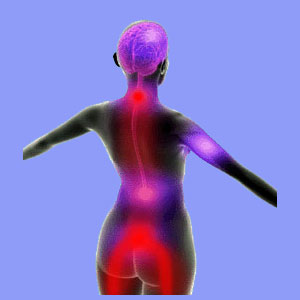
Sciatica from whiplash may be directly related to injury suffered during physical trauma or may be a result of the nocebo effect of the accident which took place. Sciatica is not generally a result of neck injury, since whiplash generally affects the cervical and upper thoracic spinal regions almost exclusively. However, in some particularly severe cases, structural changes in the neck can affect the lower body, especially when damage is extreme.
It is always crucial to investigate every possible reason why sciatica exists and consider both the physical and psychosomatic possibilities alike. Remember, every accident capable of causing whiplash is highly traumatic and can enact pain through many possible mechanisms and processes.
This essay will examine how lower body neuralgia might be related to an injurious trauma which caused whiplash.
Sciatica from Whiplash Injury
In the case of a severe cervical or upper thoracic injury, the spinal cord may be affected by a herniated disc or fractured vertebrae. If this occurs, the resulting spinal stenosis may affect the integrity of the neurological capability of the cord.
Severe spinal stenosis which occurs due to trauma may cause pain, tingling, weakness or numbness in the legs and lower body regions. These cases may resolve or may require treatment, depending on the exact nature of the injury and the prognosis provided by the attending physician.
Muscular interactions are also a possible consequence of injury, since the muscular anatomy of the back and neck is very interdependent.
Mindbody Whiplash-Related Sciatica
Any significant trauma, such as a sports injury, car accident or fall, can impart a significant nocebo effect on the victim. Being that most people who are injured in accidents are given an overall examination to seek out damage, patients are often diagnosed with injuries which have actually existed in the lower back for a long time, yet caused no previous symptoms. The existence of herniated discs and spinal osteoarthritis in the lower back are incredibly common and many of these injuries are mistakenly blamed on the recent trauma.
Even if no structural issues are found, the doctor may warn the patient that they may be sore or feel widespread pain after the accident. This is all it takes for many psychosomatic pain syndromes to develop.
A fascinating process called delayed onset pain is definitely a major factor to consider in whiplash events. This occurrence can cause pain through purely physical reasons, but is often inherently linked to a conditioned response suffered by the psyche. In essence, the mind expects pain, so pain actually occurs.
Sciatica from Whiplash Guidance
The likelihood of suffering chronic sciatica as a direct result of whiplash is slim. However, it may occur. The most logical explanation for patients who do develop seemingly illogical lower back conditions from cervical injuries is due to the nocebo reaction, which is documented and proven in modern medicine.
Treating physicians are warned against imparting this effect and should be held responsible for enacting it solely as a means of enslaving a patient in long-term treatment. This unethical practice is more common than I like to admit, since back pain is big business and some care providers are out to make money, just like any other business people.
Of course, when a significant structural problem occurs in the neck, as a result of the trauma, then this may completely explain the sciatica through purely anatomical means. However, in these cases, there should be absolutely no doubt as to the source, once diagnostic imaging is performed.





